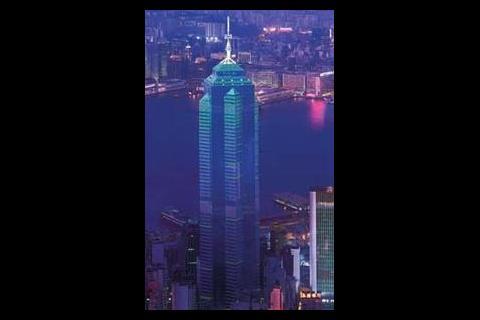A report last year published by the London School of Economics for Development Securities 1, predicted that as the number of households and jobs soar, the capital alone will need to accommodate a population the size of Liverpool by 2016 within its existing boundaries. It also claimed that London will require five to seven times the amount of extra office space currently provided at Canary Wharf over the next 25 years. In this context, tall office buildings, with their efficient use of space, must form part of the solution.
Of course, the Greater London Authority2 has an important role to play in development issues. It requires that local planning authorities in London consult with the mayor on proposals for tall buildings that are 75 m tall or more and in the City of London; 25 m or more in the Thames policy area; and 30 m or more elsewhere. But, it is well known that Ken Livingstone broadly supports tall building developments, both as clusters and as stand-alone buildings, giving an increased sense of inevitability to future high-rise developments. Indeed, in Towards the London plan, the mayor has put on record his support for "high buildings [which] are often flagship developments that play an important part in regeneration." What is more, he views the provision of a continued supply of office floorspace taking place in a wide range of locations, from traditional areas, such as Canary Wharf and the City to other Central London locations including Paddington, Victoria, London Bridge and Waterloo, and also suburban centres like Croydon.
If more high-rise commercial developments are to be given the green light in the years ahead, then what are the implications for building services engineers? It seems that there are four key challenges facing parties involved in their construction: achieving best value; maximising sustainability; providing optimum comfort conditions; and ensuring the greatest flexibility of use for occupants over the lifetime of the building.
It may appear odd that one aspect of building services can make a significant contribution in all these areas. However, underfloor air conditioning technology can make a formidable contribution, as has been demonstrated in a number of projects around the world. As with all construction projects, value engineering will be a major priority in these and other tall building projects, and is an area where building services engineers can make a major contribution to a developments success. Indeed, in the words of CIBSE, building services engineers have a responsibility to design "structures that are energy efficient and cost effective throughout their life cycles".
With building services typically accounting for between 30-40% of the initial construction cost of a commercial building, many value engineering studies in the sector continue to focus on reducing these figures, but often at the expense of longer-term considerations.
These days, it is not unrealistic for commercial buildings to have at least a 40 year lifespan, with construction costs amounting to just 11% of the total life cost over this period. The balance typically comprises the costs of financing the development (14%), and more significantly, those of operation (50%) and reconfiguration (25%). Today's building occupiers are far more aware of the reconfiguration and operational disadvantages imposed upon them by poorly designed buildings. Increasingly they demand a flexible office space able to cope cost-effectively with office churn and are willing to pay developers a premium for such environments.
The initial cost savings provided by the specification of underfloor air conditioning on high-rise developments are nevertheless impressive. Using a raised access floor instead of a false ceiling for air conditioning, ventilation, cable and power distribution services brings a net height saving per floor of approximately 450 mm. Typically, this equates to a reduction in the building height of as much as 10-15% – a dramatic saving on high-rise buildings. This enables developers to get more usable floor space for their investment, generating huge reductions in component and labour costs while dramatically shortening the whole construction programme time.
Just take a look at two of the world's landmark skyscrapers which are testament to these benefits, and much higher than anything yet built in this country - The Center in Hong Kong and the Menara Telekom building in Kuala Lumpur.
Standing 352 m and 80 storeys high, The Center is Hong Kong's fourth tallest building and provides over 90 000 m2 of high quality office space. The striking Menara Telekom building, which officially opened in February 2003, is a 310 m high development, featuring over 60,000 m2 of commercial office space within its 55 storeys. Both buildings are equipped with AET's Flexible Space System which incorporates Hiross underfloor air-conditioning technology, and on both developments the initial cost of construction has been dramatically reduced thanks to the system's specification.
At The Center in Hong Kong, for example, the application of an underfloor system offered a saving of 35 m in height when compared with conventional vav resulting in approximately US$5 million saving on the cost of curtain walling alone, with further savings coming in reduced vertical components, such as, lift shafts, stairwells, risers and structural elements. In other recent studies, BAA has compared underfloor with fan coil installations and found savings in time in the region of 25%. They estimated that the conventional build on a 5500 m2 ft building would take 58-62 weeks with fan coil air conditioning against a building with an underfloor system, which actually took 31 weeks to build and less design time as well.
For the developer such a shortening of the programme time allows financial savings on the total interest charge on a project. Earlier release of the building means letting takes place much sooner and the revenue earning potential of the development is realised more quickly. The larger the development, the bigger the financial gain of course.
Another key area of concern has to be sustainability. The joint CABE and English Heritage guidance on tall buildings, published in March 2003, lists the sustainability of any proposal as one of its key criteria. Giving this element further weight is the government's view that this joint guidance "would be capable of being a material consideration in the determination of planning proposals".
On this point, tall buildings can lead the way to an environmentally sustainable future – so states one recent report commissioned by the Corporation of London. Tall buildings and sustainability3 concluded that advances in technology combined with sensitive design, can make tall buildings more environmentally sustainable and better value for money.
Of course, building more efficiently in the first place is an important stepping-stone on the way to sustainable development. Some 10-20% of the energy used in buildings over their lifetime is in the form of embodied energy incorporated in materials and in the process of building itself, according to this report. Using fewer materials and shortening the build process through the application of advanced technology, like underfloor air conditioning systems, is one obvious way to enhance the sustainability of tall building construction.
Reducing energy consumption is also a significant factor, particularly since the most intensive use of energy usually results from the heating or cooling of spaces. Of course, building designers and engineers must make effective use of the latest energy saving techniques in high-rise buildings such as passive solar heating, the thermal mass of the building and high insulation levels. But where mechanical heating and cooling is required then underfloor air conditioning can make a major impact in cutting the amount of fossil fuel consumption typically required by vav or fan coil air conditioning. Studies both in the UK and the Far East show that as much as a 30% reduction in electrical consumption is possible, although each project must be examined in its own right.
Underfloor systems are more efficient in cooling and heating performance than other types of air conditioning, in turn, bringing operational cost savings as high as 50% over a building's lifetime. The low pressure, low energy operation of the system saves on running costs while the zoned thermal management design offers better air conditioning efficiency when compared to vav or fan coil systems.
Underfloor air conditioning makes use of the floor void directly for air distribution, the air comes into direct contact with the floor slab. Using off peak power tariffs and the free cooling effect of night time air in many geographical regions, plant can be run at night to cool the floor slabs (thermal mass of the building) such that the next day cooling load may, to some extent, be absorbed into the slab so reducing the demand on the chillers. Underfloor air conditioning systems are also easier, quicker and cheaper to clean and maintain with straightforward access possible through the raised floor.
Further value engineering savings are also achieved over the lifetime of a multi-tenanted, high rise building, by reducing the cost of reconfiguration. Office churn is a fact of modern life. Changes to the interior layout, frequently accompanied by the installation or moving of partition walls, have far-reaching implications for building services. In many cases, reconfiguration of the air conditioning to accommodate such flexible working practices is neither easy nor cheap to do.
In a recent article for Director magazine, John Dee, project director at BBC Property, revealed that at the BBC's White City offices, some £10 million was spent in the first seven years of the building's life simply on the creation and dismantling of offices, including changes, such as lowering ceilings and moving air conditioning. Multiply the effect of such changes by the number of companies who will occupy one of the new generation of high-rise towers to be built in London over the next decade or so, and the cost with the resulting waste of resources becomes potentially disastrous. In contrast to other air conditioning technologies, underfloor air conditioning is suited to this fast-changing commercial environment. It utilises the plenum under a raised access floor as a duct in itself, with the building divided into a number of zones depending on the potential use and occupancy density of the area. Each zone is supplied with chilled or warmed air by a conditioned air module (cam). The underfloor void is divided into supply and return air plena using easily relocatable, airtight baffles.
Supply air is drawn up into the occupied space by fan assisted terminal units (FTU450), which are recessed into the floor, plug into an underfloor power source and are connected by data cabling for intelligent control. These fan tile units feature individual controls to provide variable speed and temperature adjusted for maximum user comfort.
Since they are not restricted by duct or pipe connections, they are easily interchangeable with floor panels in a matter of minutes, allowing easy reconfiguration of the system to accommodate changes with minimum cost and disruption. Air travels back to the cam via return grilles located over the return channel for re-conditioning and is mixed with fresh air at that point to achieve high standards of indoor air quality.
In the first year of operation the facilities manager at the Panasonic headquarters building – a 13 storey development in Paris – estimated that 70% of the workstations were relocated to suit changing management requirements and individual preferences. Reconfiguring the building's underfloor air conditioning system to accommodate these changes cost between £10-15 m2 and took just one tenth of the time he had recorded in his previous building. In that building which had been equipped with ceiling based fan coil units, comparative costs equated to £100-150 m2 with an equivalent project time scale of between 12-16 weeks.
Applying this same logic to The Center in Hong Kong, if an ordinary fan coil or vav system had been installed, we can estimate that the tenant savings could equate to a figure approaching £13.5 million for this equivalent period of occupation. And that's without any consideration or measure of the effect of disruption on staff productivity.
In conclusion, tall buildings are widely recognised as one way of meeting the UK's, and specifically London's, rising demand for office space, because of the efficient use they make of the limited land available.
Building services engineers have a special responsibility to ensure that, as these buildings emerge in the years ahead, due consideration is given to the key factors of potentially high impact, high-rise development. In doing so, the case for underfloor air conditioning is one that, from a range of perspectives, they surely cannot afford to ignore.
Source
Building Sustainable Design
Reference
1. Tall buildings: vision of the future or victims of the past?, London School of Economics and Political Science, June 2002.
2. Interim strategic planning guidance on tall buildings, Greater London Authority, October 2001
Director, Director Publications Ltd, March 2002
Guidance on tall buildings, CABE and English Heritage, March 2003.
3. Tall buildings, sustainability and the city, W. Pank, H. Girardet and G Cox, February 2002, The Corporation of London.
Postscript
For further information, please contact Glan Blake Thomas, Advanced Ergonomic Technologies on 01342 310400.


























No comments yet